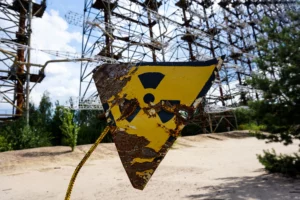
Ukraine’s Road to EU Membership: Navigating Geopolitical Challenges and Reforms
Gain insights into the ongoing conflict with Russia and the importance of sustained support. Read more for a comprehensive understanding of Ukraine’s European journey.

The invasion of Ukraine by Russia in February 2022 marked a critical juncture for the United States and its allies. Their mission: to support Ukraine against Russian aggression and ensure accountability. While the Western response has been clear, the endgame of this war remains uncertain. As the conflict progresses, it’s evident that neither side can achieve a decisive military victory. This realization necessitates the development of a clear vision for ending the war in Ukraine.
The intentional ambiguity of the U.S. policy towards Ukraine, according to National Security Adviser Jake Sullivan, focused on strengthening Ukraine’s position on the battlefield and at the negotiating table, rather than outlining a specific endgame. This approach made sense initially, given the unclear trajectory of the war and openness to negotiations.
After fifteen months of fighting, with no decisive military victory in sight, the need for a clear endgame is apparent. Continuation without a defined endgame risks a prolonged and devastating conflict with no conclusive outcome.
The United States and its allies face a critical decision regarding their strategy. They can either guide the war towards a negotiated end in the coming months or prolong the efforts for years, incurring multiplied costs without altering the conflict’s fundamentals.
The imminent Ukrainian military counteroffensive, even if successful, is unlikely to produce a decisive outcome. Territorial gains do not guarantee Russia’s cessation of fighting, and the conflict could persist even in the face of defeat.
The war is likely to be protracted, with persistent threats from both sides and an unresolved dispute over annexed territories. Neither side can achieve its territorial objectives, leading to a potential forever war with severe implications for both nations and the international community.
A prolonged conflict elevates the risk of escalation, including nuclear use or a Russian-NATO war. The economic fallout and strain on Western resources could persist, negatively impacting the global economy.
Given the unlikelihood of a decisive military victory, an armistice agreement emerges as the most plausible endgame. This agreement should include a cessation of hostilities, withdrawal of forces, and the creation of a demilitarized zone.
The armistice agreement should be accompanied by renewed political negotiations. The United States and its allies should facilitate talks addressing core grievances, potentially involving autonomy for disputed regions and guarantees of minority rights.
International mediators, such as the Organization for Security and Cooperation in Europe (OSCE), can play a crucial role. They can facilitate negotiations, provide impartial oversight, build trust, and ensure compliance with agreed-upon terms.
The significant humanitarian crisis resulting from the war requires prioritized humanitarian assistance. The U.S. should focus on providing aid and facilitating the safe return of displaced persons when security allows.
Implementing confidence-building measures, including exchanges of prisoners of war, joint military exercises, and economic cooperation initiatives, can help build trust between Ukraine and Russia.
As part of the endgame, establishing long-term security guarantees for Ukraine is crucial. Diplomatic agreements, military partnerships, and potential international peacekeeping forces can assure Ukraine’s sovereignty.
Resolving the conflict requires active engagement with regional and global stakeholders. Coordination with countries like Germany, France, and other European nations, as well as engagement with Russia, is essential for a mutually acceptable solution.
The war in Ukraine has reached a stalemate, highlighting the need for a defined endgame. The United States must shift its focus towards facilitating a political settlement, including pursuing an armistice agreement, engaging in negotiations, addressing the humanitarian crisis, implementing confidence-building measures, providing long-term security guarantees, and involving regional and global stakeholders. Through these efforts, the United States can contribute to ending the suffering in Ukraine and promoting stability in the region.

Gain insights into the ongoing conflict with Russia and the importance of sustained support. Read more for a comprehensive understanding of Ukraine’s European journey.

Unraveling Geopolitical Chaos: The Dam Destruction and Ukraine’s Counter-Offensive in the Face of Nuclear Armageddon.

Discover the pivotal role of AI in the future of geopolitics, influencing everything from military advancements to international diplomacy.